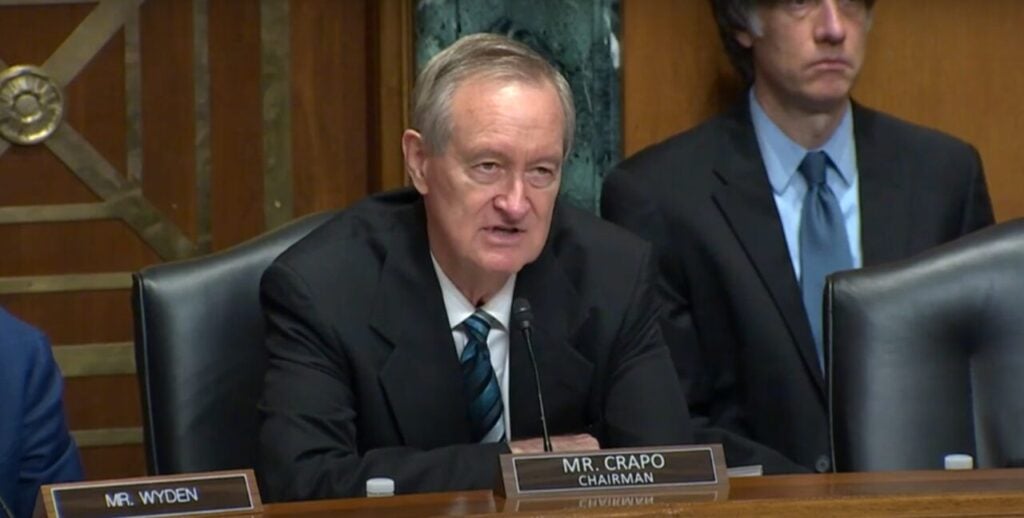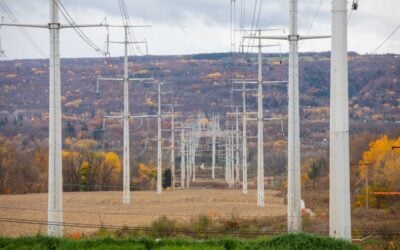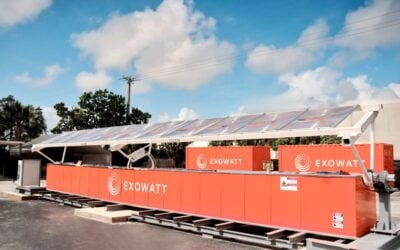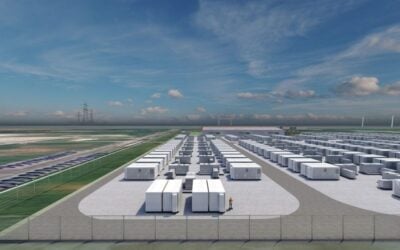
US tax credits for energy storage projects could be retained even if solar PV, wind and electric vehicle (EV) incentives face cuts.
The chairman of the US Senate Finance Committee, Senator Mike Crapo, released draft legislation yesterday (16 June) for the portions of the budget reconciliation bill that fall under the committee’s jurisdiction.
In a brief statement, Crapo said that the legislation would, among other things, “achieve significant savings” through major cuts to Green New Deal spending while “preserving and protecting them for the most vulnerable.”
The bill arrived at the Senate’s door in late May after just passing the House of Representatives by one vote.
Try Premium for just $1
- Full premium access for the first month at only $1
- Converts to an annual rate after 30 days unless cancelled
- Cancel anytime during the trial period
Premium Benefits
- Expert industry analysis and interviews
- Digital access to PV Tech Power journal
- Exclusive event discounts
Or get the full Premium subscription right away
Or continue reading this article for free
At that time, its provisions included immediate termination of tax credits for EVs and residential clean energy and drastically shortened runways to the end of tax credits for solar PV, wind, and energy storage. The version which emerged from the House of Representatives was even more hardline in its treatment of clean energy incentives than the one that had entered it.
As it now stands in the committee proposal, solar PV and wind investment tax credits (ITCs) begin to phase out in 2026. Any projects beginning construction during the 2026 calendar year would be eligible for just 60% of the credit’s value. From 2027, they would receive only 20% and nothing in the following year. The same timeline would be applied to ending clean electricity production tax credits (PTCs) for solar and wind.
However, regarding the ITC, “other qualifying facilities,” which include geothermal, nuclear, hydroelectric and energy storage, would continue the original timeline in which a phaseout begins in 2032, receiving 100% of the credit in 2033, 75% in 2034, 50% in 2035 before it falls to zero in 2036. Another positive aspect of the bill appears to be that transferability for tax credits that are retained will be kept in place.
Despite the retention of the investment tax credits for energy storage, the proposal restricts access to credits for projects receiving material assistance from prohibited foreign entities (PFEs) or foreign entity of concern (FEOC) companies. Any such project that commences construction after 31 December 2025 would not receive any credits. China, the main importer of energy storage materials, components and equipment to the US, is among those designated foreign countries.
Advanced manufacturing credits look set to remain in place, but again, restrictions on material assistance from PFEs or FEOCs could be a limiting factor to the ability to invest in US domestic production.
Meanwhile, EV tax rebates, residential clean energy credits, and energy efficiency credits for residential and commercial buildings would be ended under the new bill’s provisions.
The bill could be passed by Senate and handed over to the US president to be signed into law as early as 4 July, although most sources believe a late September or early October passing is more realistic.
As the bill entered the Senate for discussion, alongside dismay and shock from the clean energy industries, scientists and environmental advocates at the abrupt end to support for renewable energy and storage, there was hope that Republican Senators who would debate the bill could modify its contents.
That remains the case: yesterday’s bill is still a proposal and has not yet been approved and passed.
The Senate Finance Committee posted both the bill’s full draft text and a section-by-section summary on its website.
‘A narrow window to get it right’
In a recent interview with Energy-Storage.news, Isshu Kikuma, energy storage analyst at BloombergNEF (BNEF) had said energy storage, solar and wind installations could be expected to “plummet” in the US if the reconciliation bill led to an effective repeal of the Inflation Reduction Act (IRA), which introduced or extended many of the incentives for a decade from 2022.
Nonetheless, while some in the energy storage industry were cautiously celebrating the retention of investment tax credits (ITCs) for eligible projects until 2032, the overall tone of statements from pan-industry groups was one of extreme concern.
President and CEO of the US Solar Energy Industries Association (SEIA), Abigail Ross Hopper, speaking on behalf of member organisations in both solar and storage, said that the finance committee bill contained “modest improvements on several provisions,” but did not go far enough to protect “one of the greatest economic success stories in American history.
“As drafted by the Senate Finance Committee, this proposal would pull the plug on homegrown solar energy and decimate the American manufacturing renaissance,” Hopper said. “This bill makes it harder to do business in America for US manufacturers and small businesses and will undoubtedly lead us to an energy-strained economy with higher electric bills over the next five years.”
Jason Grumet, CEO of the American Clean Power Association (ACP), said that not only would the provisions of the Senate bill raise electricity bills, they would also threaten “hundreds of thousands of jobs across the country.”
“While the Senate Finance Committee proposal eliminates poison pills from the House legislation, abrupt changes to the clean energy tax credits unnecessarily penalise companies that are making good faith investments under current law,” Grumet said.
“The most immediate impact will be felt by consumers and companies facing increased energy bills.”
The American Council on Renewable Energy (ACORE) president and CEO Ray Long said the bill represented a “premature rollback of solar and wind tax credits,” which would be a “major setback to American energy dominance, and risks jeopardising billions of private investments that are currently benefiting communities throughout the country.”
“This represents a retreat from the certainty and scope the market needs to make the energy investments needed to meet escalating electricity demand.”
All three association heads’ statements further argued that the limits imposed on clean energy industry growth would damage US economic growth and international competitiveness.
“Let’s be clear about who will pay the price if this bill becomes law: Americans’ electric bills will spike, American workers will be laid off, American factories will shutter, American communities will suffer blackouts, and American lawmakers will forfeit the AI race to China,” SEIA’s Abigail Ross Hopper said.
ACP’s Jason Grumet said AI data centre developments, well-paid jobs and technology innovation would be driven overseas by the US’ lack of reasonable timelines to adjust to increasing taxes. Similarly, Ray Long of ACORE said the bill threatened thousands of jobs, would increase consumers’ energy costs, and “all but guarantees we forfeit the AI race to China.”
“Congress has a narrow window to get this right. We urge lawmakers finalise a bill that utilises all energy technologies, and honours existing pro-growth policies essential for strengthening American competitiveness,” Long said.





